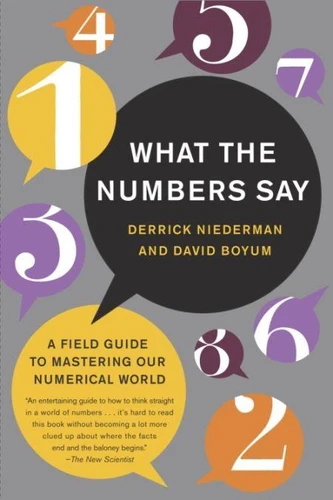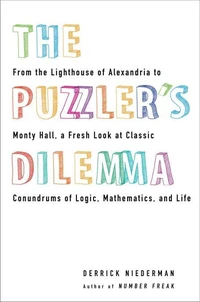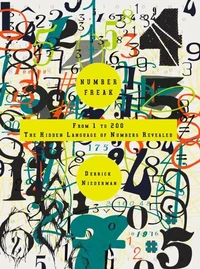What the Numbers Say. A Field Guide to Mastering Our Numerical World
Par : ,Formats :
Disponible dans votre compte client Decitre ou Furet du Nord dès validation de votre commande. Le format ePub protégé est :
- Compatible avec une lecture sur My Vivlio (smartphone, tablette, ordinateur)
- Compatible avec une lecture sur liseuses Vivlio
- Pour les liseuses autres que Vivlio, vous devez utiliser le logiciel Adobe Digital Edition. Non compatible avec la lecture sur les liseuses Kindle, Remarkable et Sony
- Non compatible avec un achat hors France métropolitaine
 , qui est-ce ?
, qui est-ce ?Notre partenaire de plateforme de lecture numérique où vous retrouverez l'ensemble de vos ebooks gratuitement
Pour en savoir plus sur nos ebooks, consultez notre aide en ligne ici
- Nombre de pages288
- FormatePub
- ISBN978-0-307-41956-9
- EAN9780307419569
- Date de parution18/12/2007
- Protection num.Adobe DRM
- Taille886 Ko
- Infos supplémentairesepub
- ÉditeurCrown Currency
Résumé
A decade ago, computer scientist Douglas Hofstadter coined the term innumeracy, which aptly described the widespread ailment of poor quantitative thinking in American society. So, in What the Numbers Say, Derrick Niederman and David Boyum present clear and comprehensible methods to help us process and calculate our way through the world of "data smog" that we live in. Avoiding abstruse formulations and equations, Niederman and Boyum anchor their presentations in the real world by covering a particular quantitative idea in relation to a context-like probability in the stock market or interest-rate percentages.
And while this information is useful toward helping us to be more financially adept, What the Numbers Say is not merely about money. We learn why there were such dramatic polling swings in the 2000 U. S. presidential election and why the system of scoring for women's figure skating was so controversial in the 2002 Winter Olympics, showing us that good quantitative thinking skills are not only practical but fun.
And while this information is useful toward helping us to be more financially adept, What the Numbers Say is not merely about money. We learn why there were such dramatic polling swings in the 2000 U. S. presidential election and why the system of scoring for women's figure skating was so controversial in the 2002 Winter Olympics, showing us that good quantitative thinking skills are not only practical but fun.
A decade ago, computer scientist Douglas Hofstadter coined the term innumeracy, which aptly described the widespread ailment of poor quantitative thinking in American society. So, in What the Numbers Say, Derrick Niederman and David Boyum present clear and comprehensible methods to help us process and calculate our way through the world of "data smog" that we live in. Avoiding abstruse formulations and equations, Niederman and Boyum anchor their presentations in the real world by covering a particular quantitative idea in relation to a context-like probability in the stock market or interest-rate percentages.
And while this information is useful toward helping us to be more financially adept, What the Numbers Say is not merely about money. We learn why there were such dramatic polling swings in the 2000 U. S. presidential election and why the system of scoring for women's figure skating was so controversial in the 2002 Winter Olympics, showing us that good quantitative thinking skills are not only practical but fun.
And while this information is useful toward helping us to be more financially adept, What the Numbers Say is not merely about money. We learn why there were such dramatic polling swings in the 2000 U. S. presidential election and why the system of scoring for women's figure skating was so controversial in the 2002 Winter Olympics, showing us that good quantitative thinking skills are not only practical but fun.





